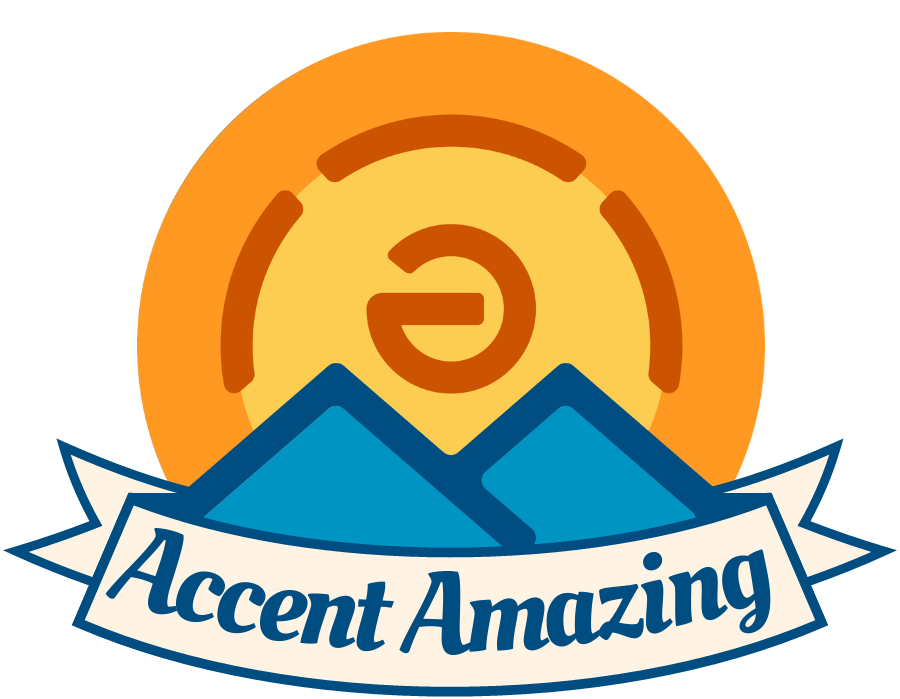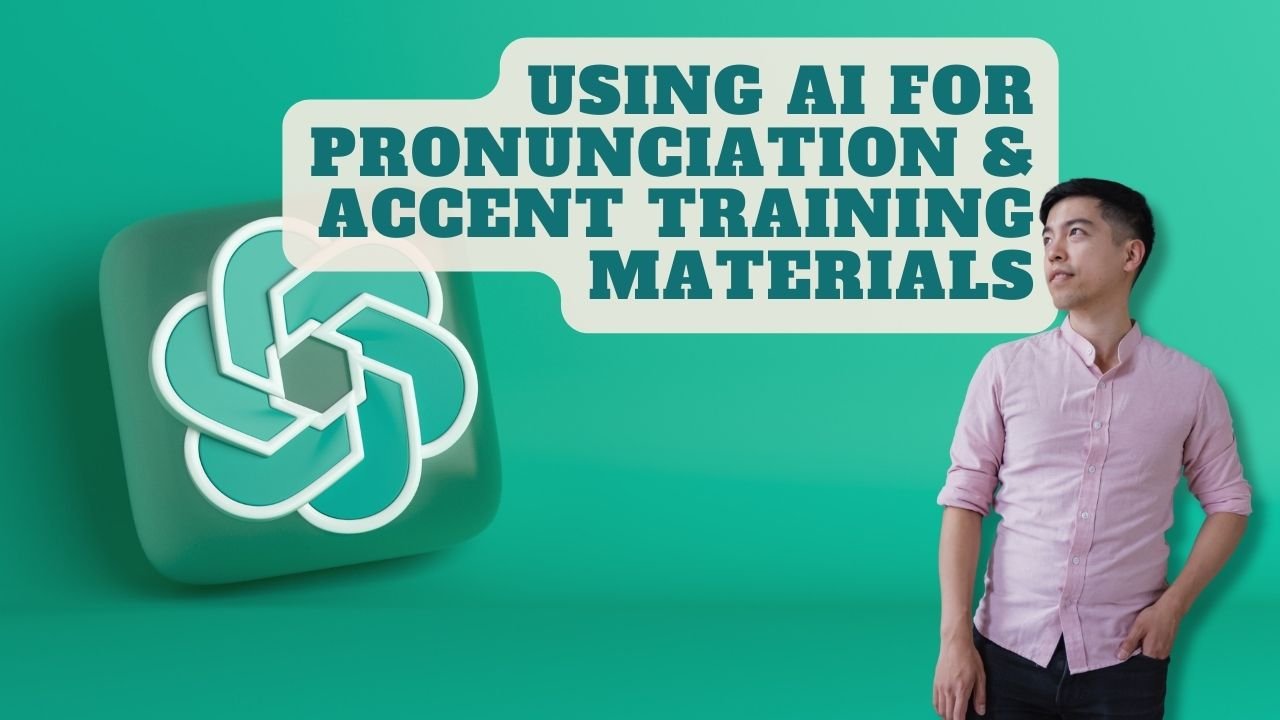AI prompts to create accent & pronunciation training materials
Combining linguistic knowledge with AI to supercharge your learning materials
Last week I led a workshop at the 2023 Polyglot Gathering on how to use AI to create materials for pronunciation and accent training materials. It was received well so I decided to create a more concise article based on its main points and examples, although you can watch the video here. This is the method I've used recently to create loads of materials in my 1:1 live accent training classes with my students as well as for creating materials for my pre-recorded video courses.
Leading the workshop on Jun 17, 2023 at the 2023 Polyglot Gathering
Pronunciation, accent, and spelling systems, oh my!
Before we get started, let me define a few things that may be slightly confusing. We'll be using ChatGPT to create accent and pronunciation materials. Pronunciation deals with how easily you can be understood, i.e. whether you can distinguish the phonemes, which are the basic mental categories of sounds that your language distinguishes. Accent deals with how easily you blend into a particular group, whether regional, ethnic, or socioeconomic, and it is determined by allophones, the subtle variations of sounds that occur when you speak that don't necessarily distinguish words.
In addition, one thing to be aware of is spelling. Most languages have a writing system that's somewhat alphabetic spelling. However, not all alphabets are that phonetic. For example, English has "give" and "five" which have different vowels despite the similar spelling: "give" /gɪv/ vs "five" /faɪv/. Compare this to Spanish "cara" /kaɾa/ and "para" /paɾa/. English spelling is less phonetic whereas Spanish is more phonetic. When creating prompts we need to be careful not to mistake spelling for sound. Sound is what the mouth knows, and spelling is not sound! Especially in English!
Now let's work on some simple prompts!
Spelling-based prompts
Spelling-based prompts are the easiest. You simply to create lists of words that have a particular spelling. Maybe you want to create a list of words starting with English "p" so you can practice the /p/ sound and aspirated [pʰ] allophone.
Be careful however, since English spelling is not very phonetic. So if you wanted to practice the /θ/ phoneme as in "thin" were to ask it to create a list of words with "th", you'd get a list of words that contain both the phoneme /θ/ and /ð/, the latter of which is in the word "then". Both of these sounds are written with the same spelling sequence
To solve this, we can try phoneme-based prompts.
Phoneme-based prompts
Here instead of the spelling, I've asked it to give me a list of words that start with the phoneme /θ/ and this time, it did not include the other "th" words that use the phoneme /ð/.
Phoneme-based prompts are helpful for another reason in non-phonetic alphabets like English. You can use it to list words that have the same phoneme but which are spelled differently, such as with the /k/ phoneme, which in English (and many other languages) can be spelled with the letters "c", "q", "k" and sometimes "ch". This saves you from having to write multiple prompts and gives you a better overall picture.
I know the “knick” and “knack” technically have /k/ at the end,
Allophone-based prompts
Now let's work on allophones to really create materials for more advanced accent-related fine-tuning materials.
Here I've asked it to give me a list of words for the English flapped T allophone, which is the d-like sound that happens in words like "water", "bottle", and "city" in American English but not in Standard British accents. And it delivers!
I actually miswrote the prompt here, since English words in isolation cannot start with a flapped T allophone, but it still performed well!
Sometimes, however, your LLM may get confused. Allophones are definitely less commonly talked about on the internet than phonemes are since dictionaries and most sites list the phonemic transcription of words rather than the allophonic narrow transcription, which is usually confined to linguistic journals. That's why you might see words in lists that are not supposed to be there, such as the crossed-out examples in the image below. Luckily, if you're asking about allophones, you probably know enough about phonology to spot the mistakes!
Because of this, sometimes we have to write...
Creatively-written prompts
If you have a decent grasp of phonological common sense and what you need to practice, you can try to be creative with your prompts. For example, if your native tongue devoices final obstruents and you need to avoid this in English, especially with final -s suffixes, you can tell ChatGPT to give you a list of words that end in "bs", "bes", "ds", "des", "gs", "ves", "ses", "ches", "zes", "dges", "ms", "ns", "ngs", creating an advanced spelling-based prompt that targets particular phonological features.
Creatively-written prompts are also helpful if you don't exactly know the allophone symbol, either because there's a variety of ways to transcribe it depending on dialect or you simply don't know what it is. If you know where the allophone occurs however, you can simply list its environment, such as below, where I created materials for students wanting to practice the /æ/-raising before nasals sounds that gives the distinctive American pronunciation of "hand" like "heh-and" as opposed to the British standard pronunciation of "hand" with less of a nasality and closed vowel.
More exciting content
Of course, now that you have these basic prompts and lists of words, you can take it further, creating longer-form content. You can generally create this by either asking it to create a prompt detailing the type of written content and then listing the words we created in the previous content, e.g. "write me a story using the following words [LIST OF WORDS]." This generally gets ChatGPT less confused and is quite helpful, but you can also incorporate the full instructions too, but I think ChatGPT gets more confused that way.
Here are some examples:
You can write in many different styles to make things fun!
Dialogues are fun too. You can practice with a friend!
Final words
So now you have some idea of how you can create accent and pronunciation materials. ChatGPT and large language models are still a new technology and undoubtedly there will be changes and improvements. At the time of writing, this is how I've been using this technology to create materials for my students in my live training classes and also for my pre-recorded video courses. This helps save time for me that can be spent creating more educational content or refining my teaching ability.
Remember, however, that although you can now easily create content with these prompts, you STILL need to actually use your mouth to practice these sounds to get that muscle memory. You won't improve in your English pronunciation and accent without practice. Your goal is to speak with the right phonemes and allophones without having to think! When it's automatic, that's how you know you're getting closer to your goal of your ideal American accent!












